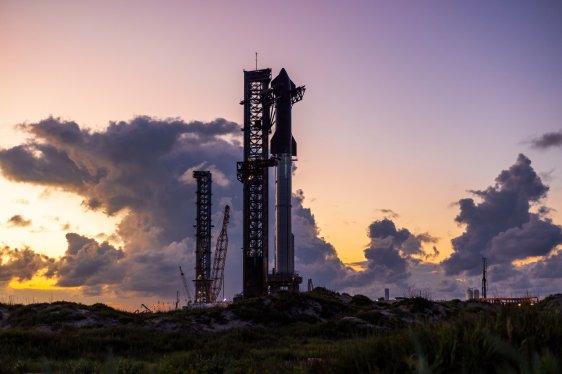Next-Generation Payload Deployment and Rocket Upgrades
In a significant move, SpaceX is stepping up its game with the upcoming test launch of its Starship program. The next rocket launch is expected to demonstrate payload deployment for the first time. This milestone will showcase the capabilities of the spacecraft in carrying and deploying payloads into orbit.
Payload Simulation
The payload in question will be 10 "simulators" that mimic the size and weight of the next-generation satellites, known as V3, which SpaceX plans to use Starship to deploy in space. These model spacecraft will travel on the same trajectory as the upper stage of Starship and splash down in the Indian Ocean.
The operational version of these satellites, called V3, is expected to be the first real payload that Starship flies. Bringing Starship online is crucial for SpaceX’s plans to rapidly expand its Starlink satellite constellation and reduce costs per satellite launched.
Starlink Satellite Constellation
SpaceX currently launches Starlink using its workhorse Falcon 9 rocket. However, the next-gen V3 satellites are expected to be much heavier than the current V2 Mini spacecraft. Thanks to Starship’s incredible payload capacity, SpaceX has said it plans to deploy 60 V3 satellites per Starship launch, which will add 60 terabits per second of capacity to the Starlink network.
Per satellite, this means that V3 satellites will have more than 10 times the downlink and 24 times the uplink capacity compared to the V2 Mini satellites. This upgrade will significantly enhance the performance of the Starlink network.
Rocket Upgrades and Propulsion Improvements
In a blog post ahead of the seventh test launch, which is expected to take place later this month, SpaceX mentioned that it is introducing a slew of upgrades to the rocket. These include improvements to:
- Propulsion System: Enhancements to the propulsion system will boost efficiency and reliability.
- Avionics: Upgrades to avionics will improve navigation, communication, and control systems.
- Heat Shield: Improvements to the heat shield will increase protection against atmospheric re-entry.
These upgrades are expected to significantly enhance the performance and reliability of Starship.
Catch Attempt
During this test, SpaceX will also attempt to "catch" the Super Heavy booster. This feat was accomplished for the first time during the fifth test in October. The successful catch of the booster demonstrates the company’s progress towards reusability and reducing costs.
SpaceX’s Starship Program: A Leap Forward
The upcoming test launch marks a significant milestone in SpaceX’s Starship program. With its incredible payload capacity, advanced propulsion system, and improved heat shield, Starship is poised to revolutionize space transportation.
The successful deployment of payloads will pave the way for rapid expansion of the Starlink satellite constellation. This will not only enhance the performance of the network but also reduce costs per satellite launched.
Conclusion
SpaceX’s Starship program is making significant strides towards its goal of rapid and cost-effective space exploration. The upcoming test launch will demonstrate payload deployment for the first time, showcasing the capabilities of the spacecraft in carrying and deploying payloads into orbit.
With its advanced propulsion system, improved heat shield, and enhanced avionics, Starship is set to revolutionize space transportation. The successful catch attempt during this test further demonstrates SpaceX’s progress towards reusability and reducing costs.
As the company continues to push the boundaries of space exploration, one thing is clear: SpaceX’s Starship program is a leap forward in the right direction.
SpaceX’s Roadmap to Starlink Expansion
- Current Launch Method: Falcon 9 rocket launches V2 Mini satellites.
- Future Plan: Starship will deploy V3 satellites, which are expected to be much heavier than the current V2 Mini spacecraft.
- Payload Capacity: Starship has an incredible payload capacity, allowing it to deploy 60 V3 satellites per launch.
- Benefits: Rapid expansion of the Starlink satellite constellation and reduced costs per satellite launched.
Starship’s Payload Simulation: A Key Milestone
The next rocket launch is expected to demonstrate payload deployment for the first time. This milestone will showcase the capabilities of the spacecraft in carrying and deploying payloads into orbit.
Key Points
- 10 "simulators" will be deployed as payloads, mimicking the size and weight of V3 satellites.
- The operational version of these satellites, called V3, is expected to be the first real payload that Starship flies.
- Bringing Starship online is crucial for SpaceX’s plans to rapidly expand its Starlink satellite constellation and reduce costs per satellite launched.
Rocket Upgrades and Propulsion Improvements
SpaceX has introduced a slew of upgrades to the rocket, including:
- Propulsion System: Enhancements to the propulsion system will boost efficiency and reliability.
- Avionics: Upgrades to avionics will improve navigation, communication, and control systems.
- Heat Shield: Improvements to the heat shield will increase protection against atmospheric re-entry.
These upgrades are expected to significantly enhance the performance and reliability of Starship.






